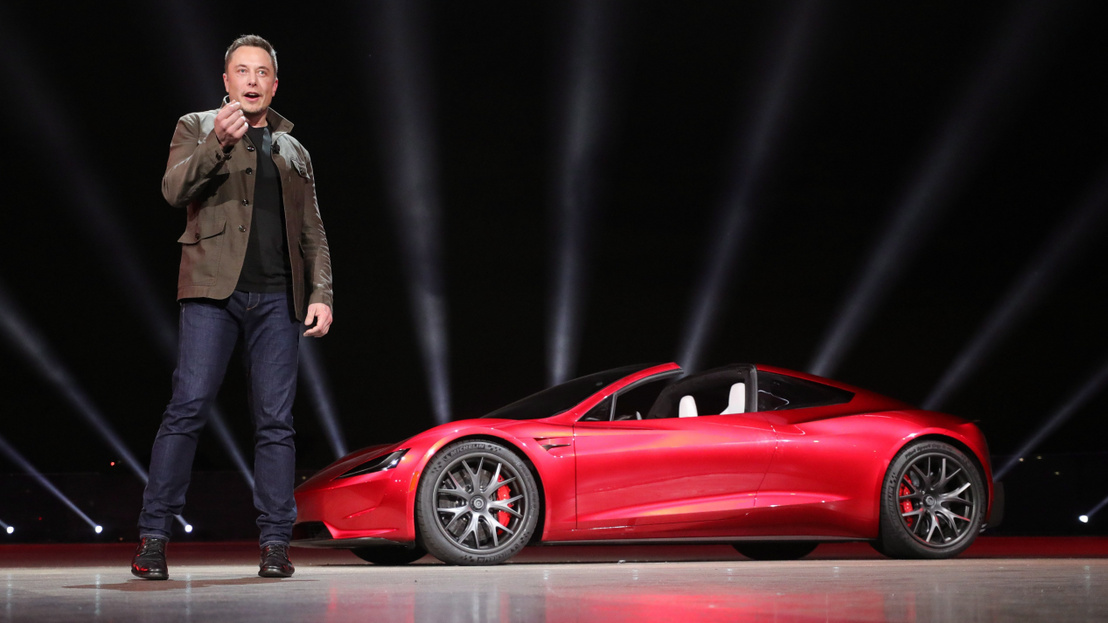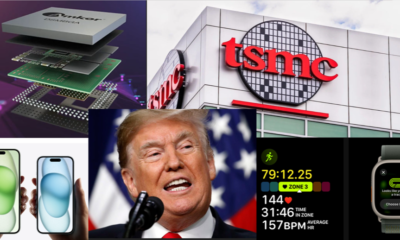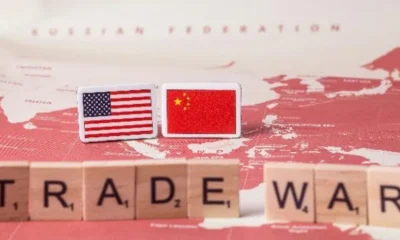Business
Tesla In Trouble? Annual Deliveries Dip For The First Time, But China Sales Hit Record Highs—Can Elon Musk’s EV Giant Bounce Back?
Published
10 months agoon

Tesla’s yearly delivery numbers are in, and for the first time ever, they’re down. Despite flashy year-end deals and the much-anticipated Cybertruck hitting the market, it seems high borrowing costs kept customers on the fence.
Elon Musk had hinted at “slight growth” in 2024 deliveries and threw in some tempting perks—interest-free financing, free fast-charging, and more. But stiffer competition, especially from Chinese EV giant BYD, and reduced subsidies in Europe put a dent in Tesla’s momentum. Even in the U.S., buyers are gravitating toward more affordable hybrids. The result? Tesla’s shares dipped by about 6%.
“The dip in deliveries doesn’t just hurt Tesla’s growth—it also impacts the market for its other services like autonomous driving software, charging, and insurance,” said Morningstar analyst Seth Goldstein. He added that Tesla’s current lineup might be reaching its saturation point.
Musk isn’t standing still, though. He’s shifting focus to a bold new venture – self-driving taxis. While the concept sounds futuristic and promising, analysts are cautious—it’s still years away from becoming a reality. For now, Tesla will need to rely on its upcoming cheaper models and the Cybertruck to drive sales growth.
Speaking of the Cybertruck, it’s not off to the strongest start. Tesla hasn’t shared exact delivery numbers yet, but demand seems lukewarm. Meanwhile, Tesla managed to deliver 495,570 vehicles in Q4, falling short of analysts’ estimates of 503,269. Production also took a hit, dropping about 7% compared to last year.
For 2024, Tesla delivered a total of 1.79 million vehicles—a slight 1.1% dip from 2023 and below expectations of 1.806 million.

Tesla Rides High on 2024 Gains, Trump But Challenges Loom
Tesla shares had a blockbuster 2024, soaring over 60%, thanks in part to Elon Musk’s open support for Donald Trump during the presidential election. Musk’s backing seems to be paying off, as he’s eyeing a key role in the Trump administration as a “government-efficiency czar.” His top priority? Streamlining federal approval for autonomous vehicles to replace the messy state-by-state regulations he’s called “incredibly painful.”
Meanwhile, legacy automakers are turning up the heat. In Europe, Tesla’s October registrations fell 24%, with Volkswagen’s Skoda Enyaq SUV snatching the crown from Tesla’s Model Y as the region’s best-selling EV.
To make matters trickier, Trump’s administration is reportedly considering axing the $7,500 federal EV tax credit. If that happens, the already slowing EV market in the U.S. could face even more headwinds. “Interestingly, even with the threat of the tax credit ending in 2025, we didn’t see a rush in sales. That might be telling,” noted Thomas Martin, senior portfolio manager at Globalt Investments.
Tesla vs. BYD. The Battle for EV Supremacy Heats Up
The race between Tesla and BYD is closer than ever. Tesla still holds a slim lead, delivering 1.79 million vehicles globally in 2024, edging out BYD’s 1.76 million. But the competition is fierce, and Tesla is feeling the heat.
To combat tepid demand and mounting pressure from Chinese EV makers, Tesla has downsized its global workforce and trimmed its China sales team. The ongoing EV price war in China, now in its third year, has forced Tesla to get creative with incentives. The company is offering a 10,000 Yuan ($1,369.99) discount on loans for its popular Model Y and zero-interest financing for up to five years on Model 3 and Model Y vehicles—deals that run until the end of the month.
Meanwhile, BYD is surging ahead with aggressive cost-cutting strategies and an expanding lineup. Its Dynasty and Ocean series of EVs and plug-in hybrids helped the company overshoot its sales target, with passenger vehicle sales jumping 41% to over 4.25 million units last year. BYD’s global ambitions are also growing, with overseas shipments up 71.9% to 414,204 units. However, the company fell short of its export target of 450,000 units, partly due to a 17% EU tariff on Chinese EVs.
Brazil, a key market for BYD, accounted for nearly one out of every five cars sold outside China. But it’s not all smooth sailing—BYD and its contractor, Jinhiang Group, are under investigation by Brazilian authorities over the treatment of Chinese workers at a local factory construction site.
Tesla’s Wall Street Rollercoaster
Tesla’s stock had a wild ride in 2024, finishing the year up 63% after a massive rally in December. Shares even hit an all-time high, surpassing their 2021 peak. But as the new year kicks off, Tesla is under pressure.
Wall Street analysts expected Tesla to deliver between 504,770 and 506,763 vehicles in Q4, based on various estimates, including those from independent Tesla researcher Troy Teslike. Actual deliveries fell short, coming in at 495,570.
Deliveries, Tesla’s closest proxy for sales, remain a key metric for investors. The Q4 report capped off a year of challenges and high stakes, as Tesla struggles with intensifying competition and a slowing EV market.

Tesla’s Year. A Rollercoaster of Politics, Competition, and Challenges
Tesla’s 2024 journey has been a mix of highs and lows, with the first quarter setting a grim tone as the stock plunged 29%, marking its worst performance since 2022. Despite CEO Elon Musk’s assurance in April that sales would surpass last year’s, the projected growth rate of 38% in 2023 was tempered by slowing momentum and mounting headwinds.
The second half of the year saw Tesla embroiled in an unexpected storyline – Musk’s deep involvement in President-elect Donald Trump’s campaign. Musk’s $277 million contribution to Trump and Republican candidates, coupled with his extensive campaigning in swing states, sparked debates about his focus on Tesla’s core operations.
Sam Fiorani, VP at AutoForecast Solutions, noted that Musk’s political escapades might have distracted him, but the real impact on Tesla’s business won’t be clear until Q1 2025.
The Growing EV Battlefield
Once a pioneer with little competition, Tesla now finds itself in a crowded arena. Legacy automakers like General Motors, Ford, and BMW, along with rising stars such as Rivian, Hyundai, and BYD, are aggressively challenging Tesla’s dominance.
European sales data underscores this pressure: Tesla’s vehicle registrations in Europe dropped 14% year-over-year, with November sales sliding from 31,810 to 18,786 units, according to the ACEA.
Patrick George of InsideEVs acknowledges Tesla’s unmatched charging network and technological edge but points out operational struggles. “Tesla’s biggest challenge isn’t innovation—it’s mastering the nuts-and-bolts job of being a car company,” George remarked.
Cybertruck Conundrum and the Affordability Gap
Tesla’s 2024 product strategy also drew criticism. The angular Cybertruck, starting at $80,000, failed to capture broad consumer interest, with units reportedly “piling up on used car lots.” Critics argue Tesla missed a significant opportunity by not launching more affordable EVs in 2024, a segment increasingly dominated by competitors.
China
China, the world’s largest EV market, has been both a significant opportunity and a growing challenge for Tesla. While the Model Y remained the second best-selling EV in the country, its sales growth of 5% lagged behind the broader EV market’s 8% expansion, as noted by Sam Fiorani of AutoForecast Solutions.
Tesla’s slower growth stands in contrast to local players like BYD, Chery, Li Auto, Jetour, LeapMotor, and Aito, which are growing at breakneck speeds.
BYD, in particular, continues to pressure Tesla, not just in China but globally, with aggressive overseas expansion and new plants outside of its home market. Tesla, meanwhile, faces stiff price competition and a maturing Chinese EV sector that demands constant innovation.
North America
In North America, Tesla retained its EV leadership, but not without concessions. To sustain demand, the company introduced various incentives and price cuts, including on its flagship Model Y SUV. Despite these measures, inventory levels increased, signaling potential oversupply issues.
The Cybertruck, Tesla’s highly anticipated and polarizing vehicle, also hit a snag. Assembly line workers were sent home temporarily during the fourth quarter, suggesting that Tesla is treading cautiously to avoid saturating the market with the vehicle, which has yet to demonstrate mass-market appeal.

Eyes on 2025
Looking ahead, CEO Elon Musk has set ambitious targets for 2025. On an October earnings call, Musk projected the introduction of lower-cost and autonomous vehicles, which he believes could drive “20% to 30% growth” compared to 2024. This strategy is critical for Tesla as it faces intensifying competition and seeks to maintain its market share in a rapidly evolving industry.
Tesla’s future hinges on its ability to juggle innovation and execution. While the company invests in ambitious projects like humanoid robots, chip development, and a driverless ride-hailing service targeted for 2027, its profits still primarily stem from vehicle sales. Musk’s vision of Tesla as more than a car company is compelling, but operational missteps and intensifying competition suggest that the road ahead won’t be smooth.
China, Tesla’s Only Silver Lining
Amid global challenges, Tesla’s performance in China is a bright spot. In 2024, the company delivered a record-breaking 657,000 vehicles in the region, up 8.8% year-over-year. December alone saw a 12.8% spike in sales, hitting an all-time high of 83,000 units. Impressively, China now accounts for 36.7% of Tesla’s total deliveries, solidifying its position as Tesla’s second-largest market.
While Tesla enjoys record numbers in China, can Musk’s Trump-era bets and ambitious plans for autonomous driving help the company overcome mounting challenges in the West? Can Tesla weather the storm and reclaim its EV crown?
You may like
-


Taiwan’s ‘Historic’ TSMC Deal, A Win Or The End Of Its ‘Silicon Shield’ As China Threatens? A Jittery Taiwan Watches Trump’s Moves On Ukraine, Wondering, Could We Be Next?
-


A Trade War That Just Won’t Quit. As Trump’s Tariffs Hit, China Stays The Course, For Xi’s Its Business As Usual Strategy
-


Indian Stock Market In Turmoil. Investors In Panic Mode, Is This A Temporary Correction Or The Start Of A Bear Market?
-


America And China’s Thirst For Gold In 2025 Is Draining Other Countries’ Reserves; Here’s Why?
-


Shakeup In The Auto Sector. Mercedes-Benz 15% Job Cuts, Nissan CEO Exit, And Germany’s Make-Or-Break Year
-


Modi’s Ideal Deal With Tesla To Produce Cars In India—But Will And More Importantly Can Tesla Take That Chance?
